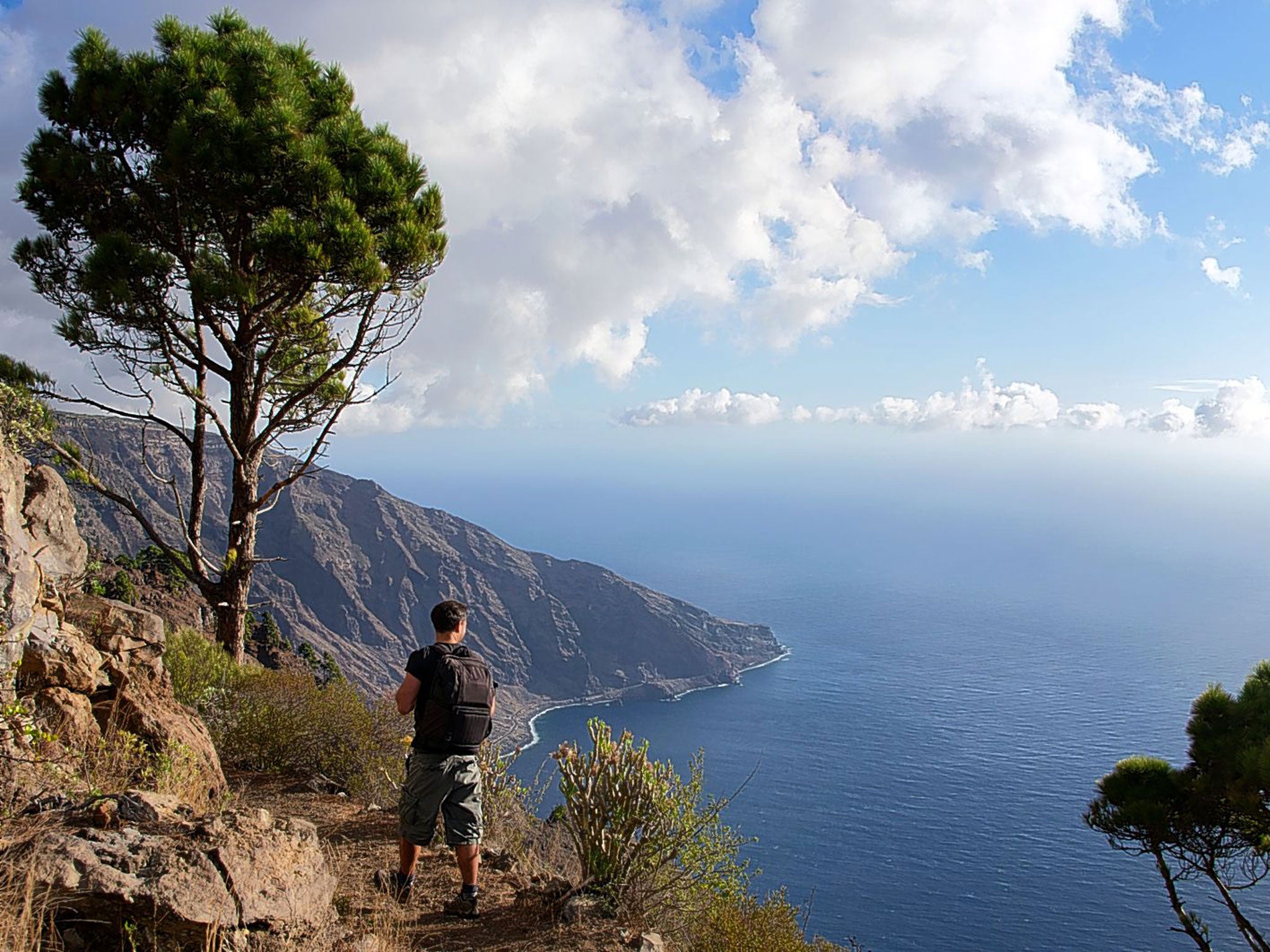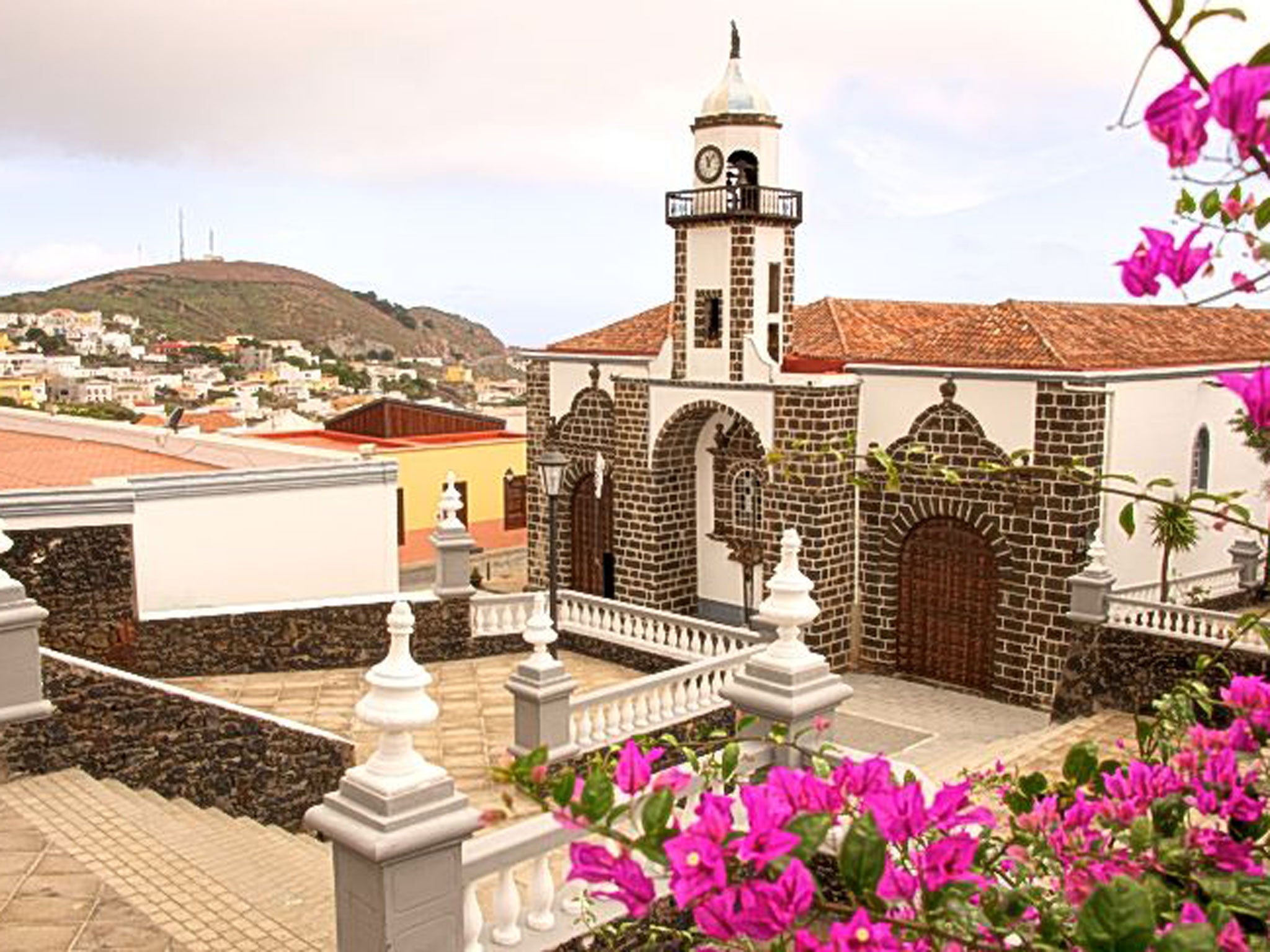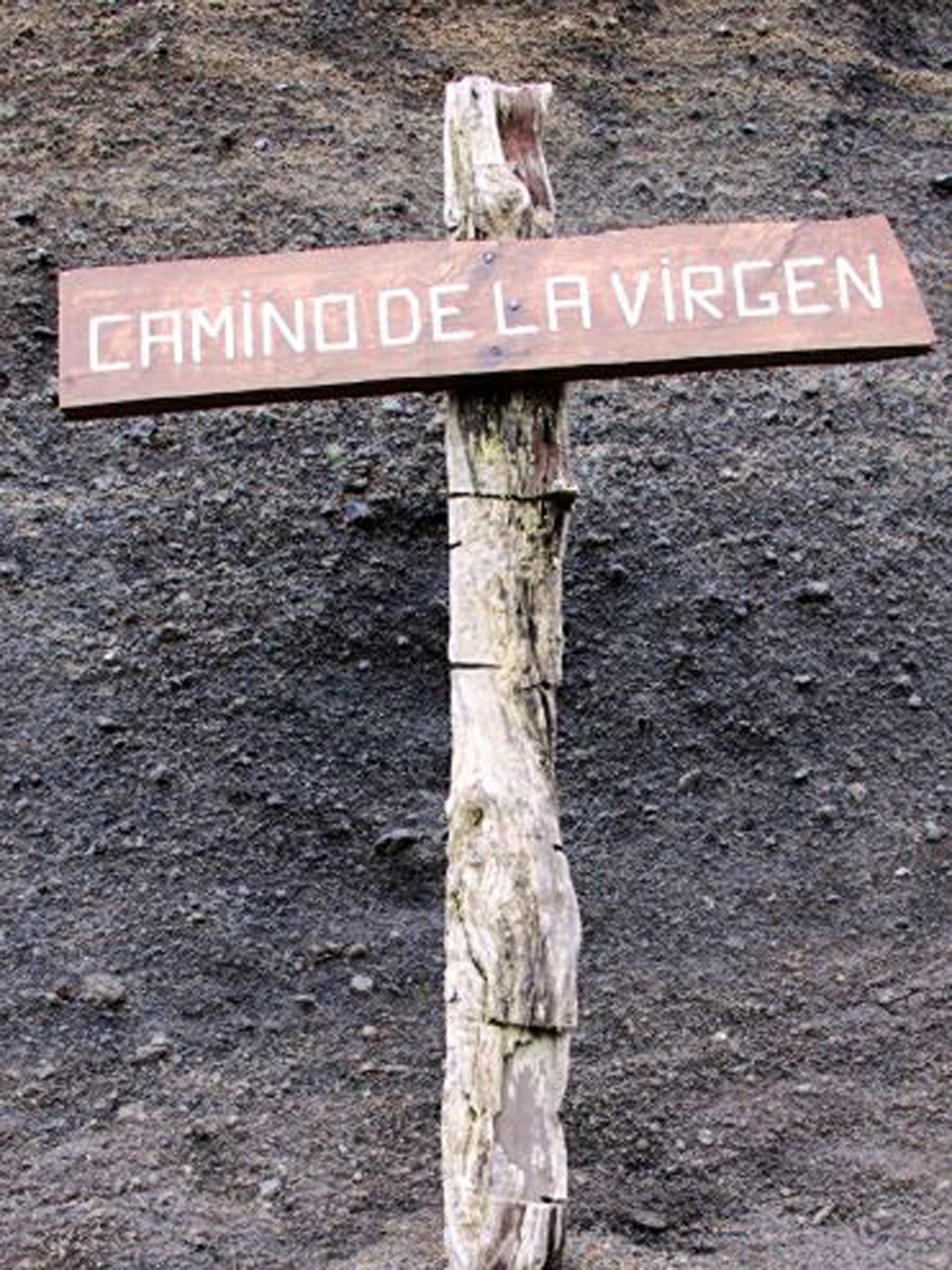The Independent's journalism is supported by our readers. When you purchase through links on our site, we may earn commission.
El Hierro: Forecast for the edge of Europe
For almost three centuries, the inhabitants of the smallest Canary Island have taken part in a religious pilgrimage to ask for rain. Aaron Millar sets out along the route to experience this remote outpost

Your support helps us to tell the story
From reproductive rights to climate change to Big Tech, The Independent is on the ground when the story is developing. Whether it's investigating the financials of Elon Musk's pro-Trump PAC or producing our latest documentary, 'The A Word', which shines a light on the American women fighting for reproductive rights, we know how important it is to parse out the facts from the messaging.
At such a critical moment in US history, we need reporters on the ground. Your donation allows us to keep sending journalists to speak to both sides of the story.
The Independent is trusted by Americans across the entire political spectrum. And unlike many other quality news outlets, we choose not to lock Americans out of our reporting and analysis with paywalls. We believe quality journalism should be available to everyone, paid for by those who can afford it.
Your support makes all the difference.I was walking at what was once the end of the Earth. Before Columbus crossed the Atlantic, El Hierro – the smallest, least developed and most secret of the Canary Islands – was as far west as Europeans had got. Even now, the feeling of remoteness was still palpable.
As I hiked up to the summit of Malpaso, the highest peak on the island, I saw more goats than people (a fact that is borne out in population figures: almost two to one) and, at the top, with the thumping resorts of Tenerife only 100 miles to the east, it was silent enough to hear waves crashing on the Atlantic almost 5,000ft below. Life, here on the periphery of Europe, has created a satisfyingly sparse brand of bliss. But isolation also has a price: for the story of El Hierro is not told in numbers of tourists, but in drops of scarce and precious water.
It begins with drought. In 1741, after months without rain and with many of the islanders already dying, shepherds carried a statue of the Virgin Mary from the pasturelands of the south-west, over the highlands to the capital Valverde, which lies in the north east, to ask for rain. As they arrived, the heavens opened and spared the population a terrible fate. Since then, every four years, the islanders have repeated the Virgin's arduous 18-mile pilgrimage – the Bajada de la Virgen de los Reyes (Descent of the Virgin of the Kings) – accompanied by music, costume, much solemnity and celebration. For a small island (El Hierro is home to fewer then 11,000 people) it's a big occasion: the 2013 procession purportedly attracted 25,000 revellers, across five weeks of festivities.

I had arrived on a new self-guided walking trip that uses detailed route notes to follow much of the Virgin's journey, veering off (via a few strategic taxis) to take in many of El Hierro's highlights along the way.
I set off in reverse, walking from the bright, windswept capital, Valverde, the end of the Bajada, along the wide path of the procession, following it south on to higher ground, where black volcanic scree and arid desert shrubs were replaced, suddenly, by lush, mossy forests of cypress and heather. I was heading to the sacred Garoé tree: symbol of the island's struggle for water, and – because divine intervention was a little erratic – also its solution. "We call it horizontal rain," Monica, a local guide, explained, and I was in the thick of it. When humid north-eastern trade winds, dense with moisture absorbed from the ocean, hit the mountains of El Hierro, they are forced to rise and cool, forming a cloud that leaves tiny drops of water on the surrounding vegetation.
The island's early settlers survived, she explained, by digging holes in the impermeable clay soil beneath bushes and trees and simply waiting for them to drip-fill. As I hiked down to El Garoé, sacred because of its water-tank-like efficiency, the logic was clear, but the tree, sadly, was not: a dense white void of wind and cloud swirled between the spiral branches, obscuring its leaves as surely as it worked its magic.

Leaving Malpaso the next day, I descended through ecosystems as rich and contrasting as layer cake. From the moon-like red summit textured in black scoria and dust, where almost nothing could grow, I passed through a sea of clouds to the laurisilva forest, dripping in lichen and ferns and with tangled tree limbs clambering for light. I was heading for the Balneario Pozo de la Salud, a dramatic spa hotel on the edge of the Malpais: the badlands, where white Atlantic breakers crash against cliffs of black pumiced lava. Based here, I spent the next couple of days exploring El Golfo: an enormous natural amphitheatre, encircled by 3,000ft-high escarpments and filled with family allotments, slumbering white-washed villages and plantations bursting with pineapple, mango and banana.
At the Mirador de Bascos – the southernmost lookout point in Europe – I crawled on my belly to the edge of the cliff as kestrels hovered in the breeze beneath me; at the spectacular 2,000ft restaurant Mirador de la Pena, I felt like I was dining on a cloud; at Charco Azul, I dived into natural sea pools, protected from the ocean by borders of slippery volcanic rock.
Then a highlight: dinner at Noly's House, the "Casa de Comidas", a restaurant held in the front room of the mother of the Mayor of Valverde. Surrounded by pictures of her grandchildren and with the sounds of Noly cooking happily in her kitchen next door, I ate a traditional Canarian feast of puchero, a seasonal stew, with fresh figs and apple cake for pudding. "If I'm cooking for my family," Noly told me, "whoever knocks on my door is welcome to share." Less than 50 years ago there were few buildings with electricity on the island. Houses were built and water collected in much the same way as they had been for centuries. Shepherds today still move their flocks according to the seasonal needs of water. Sustainability isn't a progressive attitude here – it's the echo of an ancient way of life that's still present.
"Even the young people are connected to the land," Paolo, a local guide, told me. "In one hand they may have a smartphone, but in the other they are still cultivating potatoes in the field."
This year El Hierro is set to become the world's first sustainable island, its power drawn from a revolutionary new wind and hydroelectric scheme. Those same trade winds will drive the desalination plant and provide water once again. It may soon be one of the most progressive places to live on the planet.
The end of my trip coincided with the start of the pilgrims' journey: the small stone chapel that houses the statue of the Virgin. Nearby is El Sabinar, a wild juniper forest that has been ravaged by centuries of north-easterly winds. The entire grove was bent double at the hip, twisted horizontally along the floor by the force of the gale. At first I saw only deformity – a mangled forest of bleached, dry bark and lonely, broken trees – but there is a stoic beauty too.
From here I gradually made my way east, where the island's most luxurious hotel, the Parador De El Hierro, welcomed me with wild, windswept beaches and a swimming pool splashed by storms from the sea.
The most spectacular day was saved for last: in the darkness before the dawn I took a taxi to the top of the island and then descended through parting clouds and tall Canarian pines to watch the sun rise over the east coast.
The colour of the new day warmed my face, but my mind was drawn back west, to that blue void of seamless sea and sky. Only a few hundred years ago a voyage to El Hierro was a journey to the edge of the known world.
Today, the island still possesses an air of adventure, remote natural beauty and rare Canarian tranquility that simply cannot be faked. Not bad for the end of the Earth.
Getting there
Aaron Millar travelled as a guest of Inntravel (01653 617000; inntravel.co.uk) which offers a week's self-guided walking tour called "El Hierro – The Last Outpost" from £798pp, based on two sharing, including flights from Tenerife North to El Hierro, seven nights' B&B, five dinners, three picnics, luggage transfers between four different hotels, maps and notes.
International flights to El Hierro are not included. Operators including Ryanair (0871 246 0000; ryanair.com), easyJet (0843 104 5000; easyJet.com) and Jet2 (0871 226 1737; jet2.com) offer flights from many UK airports to Tenerife South.
Eating there
Restaurant Mirador de la Pena (00 34 922 550 300) serves exquisite traditional Canarian dishes in a spectacular setting. Mains from €10 (£8.10) per person.
Noly's House (00 34 678 350 300) is located just off the main square of Sabinosa. Follow signs for the "Casa de Comidas" from the bus stop. A three-course meal costs less than €10 per person.
More information
Join our commenting forum
Join thought-provoking conversations, follow other Independent readers and see their replies
Comments